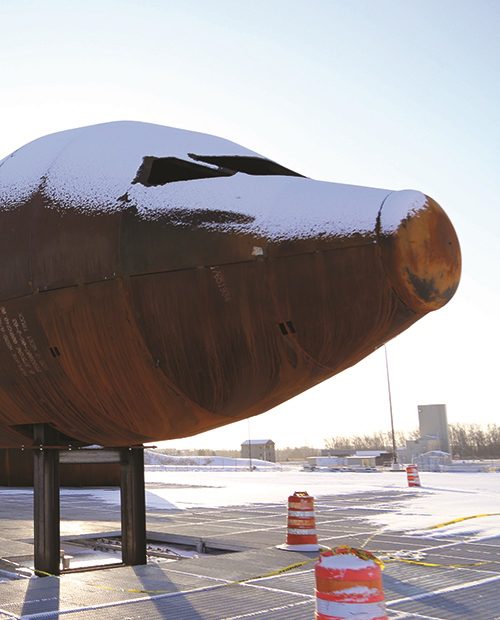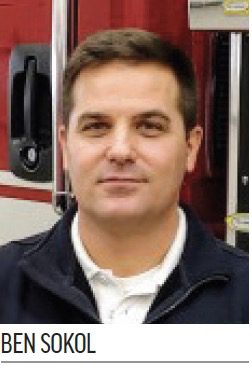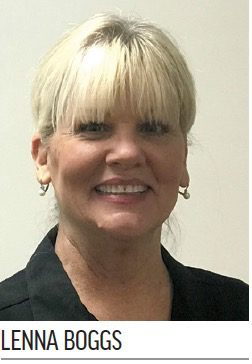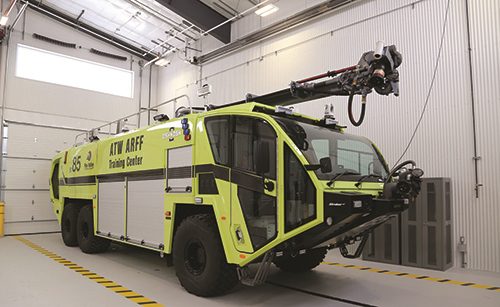There’s a new Midwestern location for aircraft rescue and firefighting (ARFF) training, and it’s the only site in the U.S. where personnel can practice on and in a full-size Boeing 777. The new training center is located at Appleton International Airport (ATW) in northeast Wisconsin.
There’s a new Midwestern location for aircraft rescue and firefighting (ARFF) training, and it’s the only site in the U.S. where personnel can practice on and in a full-size Boeing 777.
The new training center is located at Appleton International Airport (ATW) in northeast Wisconsin. The $14 million facility is a partnership between the airport and a local technical college. The center is located on 20 acres of airport land, and faculty from Fox Valley Technical College provide the training. Officials from both organizations expect the center to attract students from around the world.
Classes will include standard FAA-required courses and annual live fire recertification as well as custom training for individual airports and other agencies seeking ARFF instruction. Courses were scheduled to begin in May, but were temporarily postponed due to the COVID-19 crisis.
|
Project: Aircraft Rescue & Firefighting Training Center Location: Appleton (WI) Int’l Airport Facility Operator/Training Provider: Fox Valley Technical College Cost: $14 million Funding: $12 million from FAA; $2 million from state Facilities: 9,000-sq.-ft. building; 19,000-sq.-ft. drive-on wet deck with 96 burn zones Full-Size Training Props: Boeing 777 & Cessna Skyhawk, by Kirila Fire
Training Vehicle: 2019 Oshkosh 6×6 Global Striker,
Courses Offered: Standard FAA-required ARFF training; custom ARFF programs; swift water rescue, firearm, EMS ARFF Curriculum Overview: FAA Great Lakes Office Architectural Engineering: Omnni Associates Building Contractor: SMA Construction Services Of Note: Only ARFF training center in U.S. with full-size Boeing 777 |
“The collaboration between the airport and Fox Valley Technical College is what makes this program so special,” says Airport Director Abe Weber. “Other regional training centers offer the standard ARFF training curriculum. But here, because we partnered with Fox Valley Technical College, we can offer other training in areas such as water rescue, wildlife control, structural firefighting, law enforcement, firearm training, EMS certifications and driver operator training. The possibilities are almost endless. An airport’s training dollars will go that much further by coming to Appleton versus sending staff elsewhere. And that’s a big deal.”
Because the new ARFF Training Center is located within 700 yards of ATW’s runways, special precautions are taken to make sure that the sight of fire doesn’t alarm passengers looking out the windows of arriving and departing aircraft. The air traffic controllers receive a detailed training schedule so they know when to alert pilots about live burn exercises. The pilots, in turn, forewarn their passengers and explain that fires are controlled training exercises and not actual emergencies.
Right Place, Right Time
The idea for a new ARFF training center initially emerged about a decade ago, when Fox Valley Tech and ATW began discussions about building a training center for police and security personnel on airport land. The school’s Public Safety Training Center opened in January 2015, but a facility for ARFF training remained on the backburner until five years ago, when Weber learned that regional ARFF training centers in Duluth, MN, and Battle Creek, MI, were closing.
“That’s when we put a business plan together and took it to the FAA in Chicago,” he recalls. “We had a lot of infrastructure in place because of the Public Safety Training Center, and we had an operator [Fox Valley Technical College] that could take over and run the facility once complete. It was all nicely wrapped into one single package.”

Two years ago, FAA approved the project and issued a $12 million grant to finance construction and equipment purchases; the Wisconsin Bureau of Aeronautics funded the remaining $2 million. “The state immediately understood this project would support airports throughout Wisconsin, and help decrease training costs,” Weber explains. “Plus, many communities offer mutual aid support to their local airport; ATW ARFF provides all firefighters access to aircraft rescue training courses.”
Previously, the nearest ARFF training center was at Blue Grass Airport in Lexington, KY.
Keepin’ It Real
The training center at ATW includes a 19,000-square-foot wet deck with 96 burn zones and two specialized aircraft fire trainers: a Boeing 777 widebody and a Cessna Skyhawk.

Both aircraft training props were manufactured by Kirila Fire. Lenna Boggs, the company’s proposal coordinator, notes that the full-size Boeing prop allows firefighters to practice entering a burning aircraft and fighting fires in the fuselage, cargo area or cockpit. “It’s so spacious that they receive actual search and rescue training with the B777,” says Boggs. “This type of aircraft provides realistic training situations with a live fire. And while not every airport has B777 traffic, the B777 is a popular aircraft.”
 By adjusting the fuel flow to various burn zones, technicians can fully engulf the B777 or just light individual portions such as the wings, cockpit, landing gear, engines or other specific interior and exterior areas. “It’s pretty specific and very impressive,” says Ben Sokol, ARFF program instructor at Fox Valley Technical College. “The wet deck has a controlled drainage and filling area, and infrared camera images projected into the control room allow for flame control and monitoring. The detailed control allows instructors to create any aircraft fire scenario required, and the command system logs the scenarios and performance to create a training log.”
By adjusting the fuel flow to various burn zones, technicians can fully engulf the B777 or just light individual portions such as the wings, cockpit, landing gear, engines or other specific interior and exterior areas. “It’s pretty specific and very impressive,” says Ben Sokol, ARFF program instructor at Fox Valley Technical College. “The wet deck has a controlled drainage and filling area, and infrared camera images projected into the control room allow for flame control and monitoring. The detailed control allows instructors to create any aircraft fire scenario required, and the command system logs the scenarios and performance to create a training log.”

To increase the realism of training exercises, the airliner prop is equipped with piercing panels, actual B777 and Airbus 380 doors, and an interior smoke generation unit. Kirila added a smoke generation unit because the burn zones on ATW’s wet deck are fueled by propane, which does not produce smoke.

“Smoke impedes vision,” Boggs explains. “In order for firefighters to gain experience and confidence in a fire when they can’t see, or breathe without a breathing apparatus, we need to make the situation as real as possible and still keep the training safe.”
The Cessna training prop provides students with experience fighting fires in exterior landing gear, engine/prop areas and cockpit/cabin spaces.
Sue Morris, design engineer with Kirila, notes that the Cessna and Boeing trainers are both made of Corten, a durable weathering steel that can withstand high temperatures from fire. The B777 alone required more than 1 million pounds of Corten steel to fabricate and is so large, it had to be trucked from Kirila’s plant in Ohio in six different sections. The shell was assembled on site and now sits inside the drive-on wet deck, which provides students with 360-degree access to it.
 Technicians control the adjustable features of the aircraft and wet deck from a room that overlooks the live burn area. The control room is on the second floor of a 9,000-square-foot building that also contains a traditional classroom, three apparatus bays and a smaller bay used for equipment storage and maintenance.
Technicians control the adjustable features of the aircraft and wet deck from a room that overlooks the live burn area. The control room is on the second floor of a 9,000-square-foot building that also contains a traditional classroom, three apparatus bays and a smaller bay used for equipment storage and maintenance.
One of the apparatus bays is designated as a “dirty classroom.” It allows instructors to begin a lesson in the classroom, move students outside for a related hands-on experience, and then end with a review session back in the classroom—without having students clean up or take off their gear.
Driver’s Ed
A 2019 6×6 Global Striker, from Oshkosh Airport Products, is also used to enhance the training experience at ATW. The nearly 40-foot ARFF vehicle features a high-rise extendable turret with piercing tip, and can carry 3,000 gallons of water.

“This was a new truck built for the school,” says Jack Bermingham, senior ARFF product manager for Oshkosh. “The value in having this piece of equipment at the training center is that it is the same type of equipment many U.S. airports already have. When students complete their training at ATW, they are able to use a truck they are familiar with.”
 The truck’s “Snozzle” provides students with valuable experience penetrating an aircraft exterior to discharge firefighting agents inside. The training vehicle is also equipped with the K-Factor visual aid that helps operators use the Snozzle more effectively, notes Bermingham.
The truck’s “Snozzle” provides students with valuable experience penetrating an aircraft exterior to discharge firefighting agents inside. The training vehicle is also equipped with the K-Factor visual aid that helps operators use the Snozzle more effectively, notes Bermingham.
Oshkosh, a global leader in firefighting equipment, is located in Oshkosh, WI, just 20 miles from Appleton.
Broad Community Benefits
Weber notes that the new ATW ARFF Training Center could not have been created without the involvement of Fox Valley Technical College. “They were an instrumental piece in this,” he relates. “Being able to add onto their Public Safety Training Center facility provided us with impressive cost savings. We didn’t have to build new parking lots or bring in new water lines or new electrical services—everything was already on site. And we didn’t have to construct all new classrooms or facilities other than our new building. Everything else was already on site. We just had to add to what was already there.”
Weber expects the new training facility to profit the airport and surrounding Fox Valley region. “We’re providing a service to our community as well as a massive economic impact by drawing firefighters from around the globe to Appleton,” he explains. “These individuals will stay in our hotels, rent our cars and eat in our restaurants. That’s what I am most excited about. If this facility puts more people on airplanes to land at our airport and come into our community, that’s a benefit for all of us.”
|
SIDEBAR ARFF Training Options Standard courses offered by the new ARFF Training Center at Appleton International Airport (ATW) in Wisconsin include:
Courses are taught by faculty from Fox Valley Technical College. “We can also customize any type of training a specific airport or firefighting agency wants,” notes Ben Sokol, ARFF program instructor for the school. “If a customer requests other training, we can do it through our Public Safety Training Center or the college.” Typically, the center maintains a ratio of one instructor for every six ARFF students. But airports can reduce training costs by bringing their own certified safety officers to assist the school’s instructors. |


 facts&figures
facts&figures

